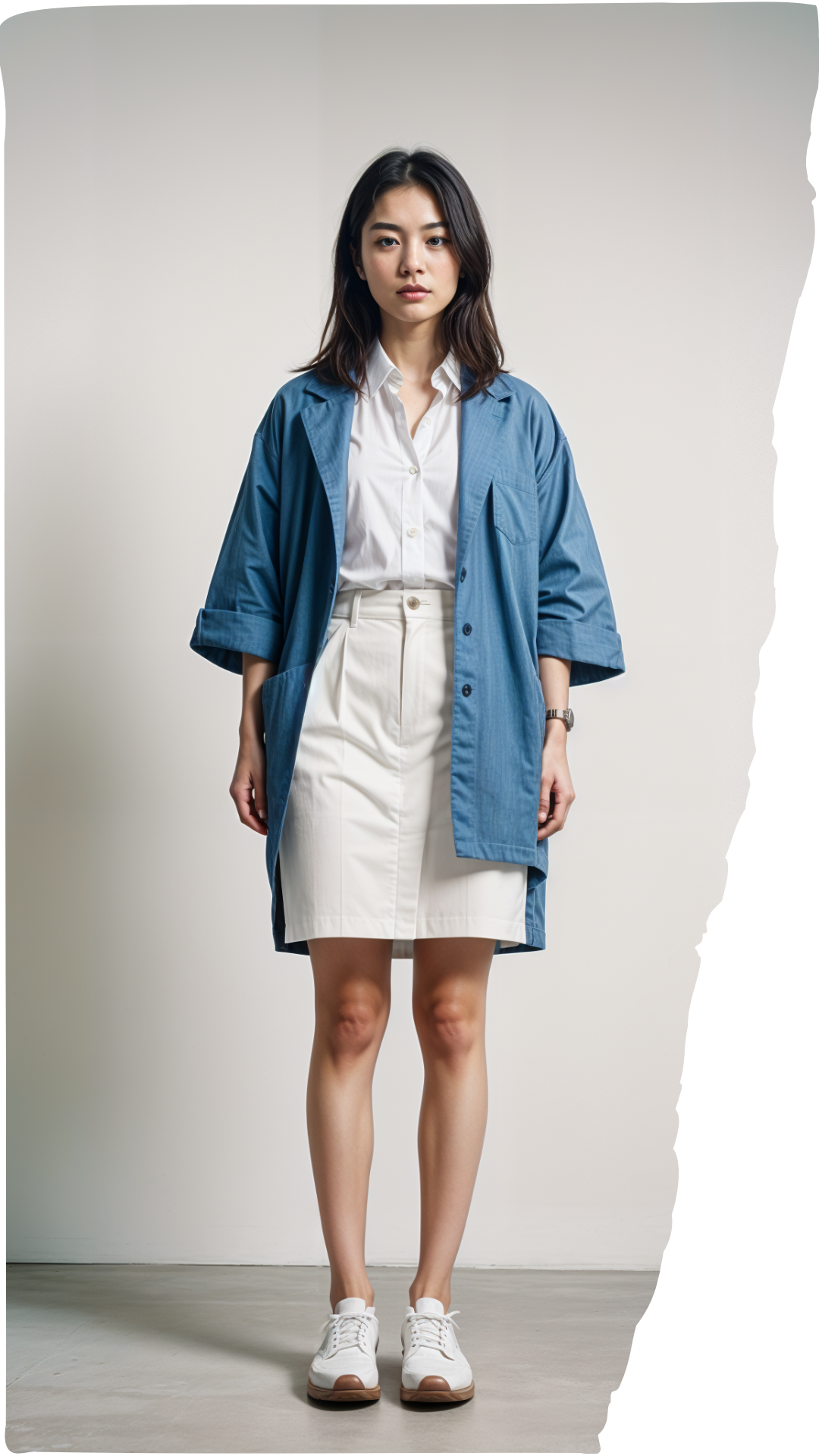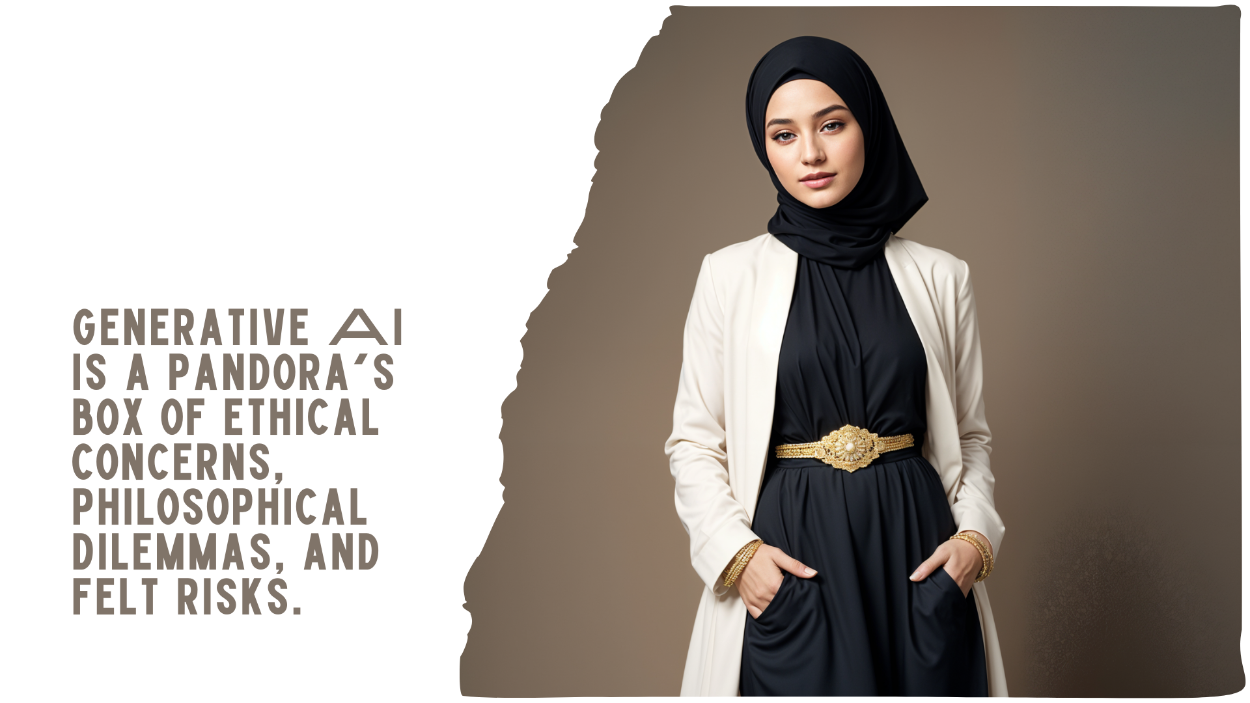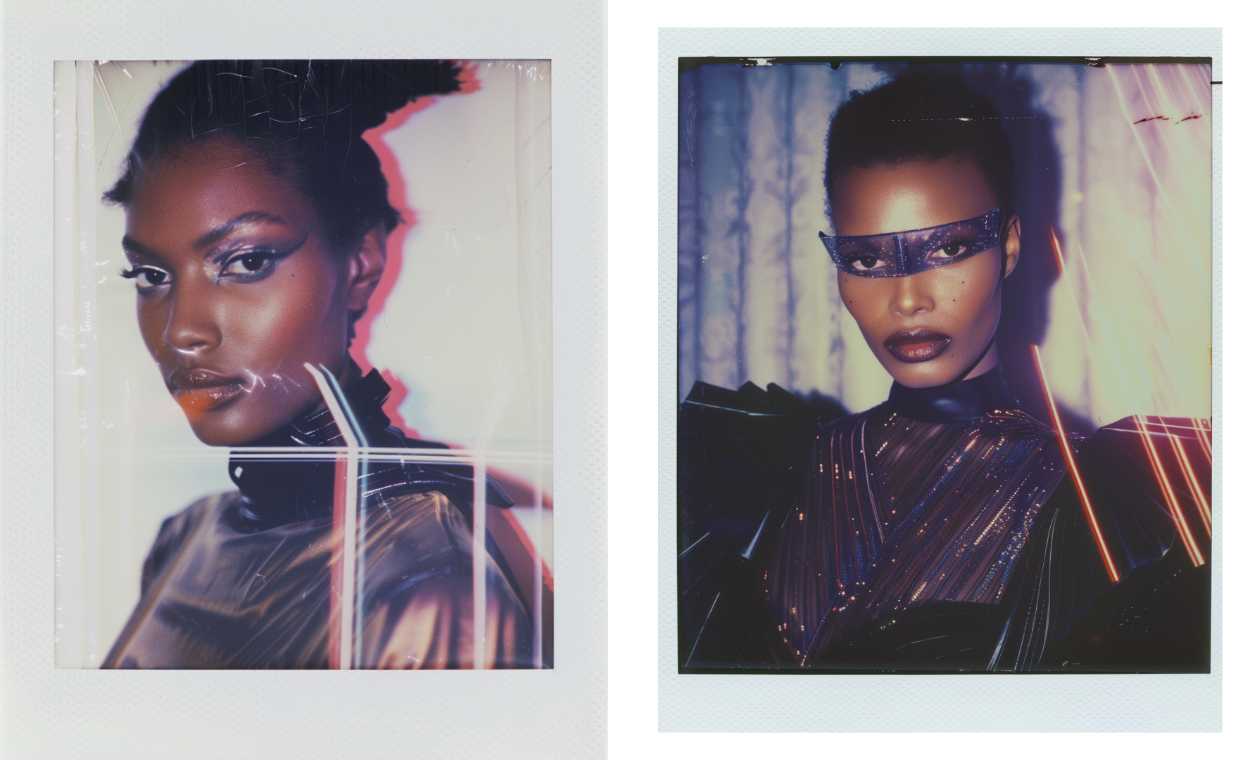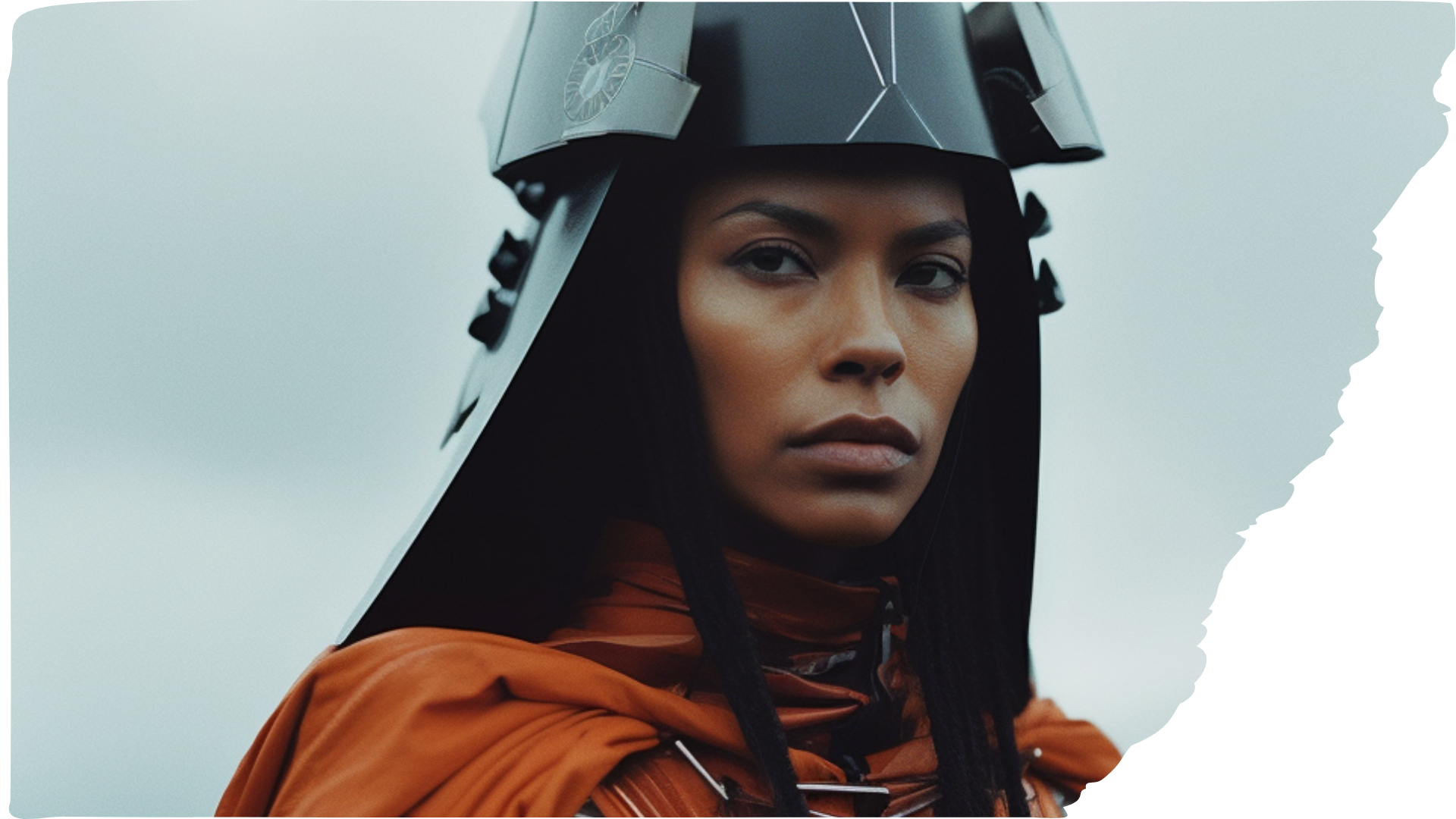[Featured image: Stefan Jakubowski]
This article was originally published in The Interline’s AI Report 2024. To read other opinion pieces, exclusive editorials, and detailed profiles and interviews with key vendors, download the full AI Report 2024 completely free of charge and ungated.
Equity, diversity, and inclusion — although not a specialist in the field, these are words I am faced with every day, and I am sure you are too. At work, in the news, and on social media, awareness is everywhere and embedded into our collective consciousness.
So why, despite some notable effort from certain brands, does a truly equitable, diverse, and inclusive fashion industry feel so far away?
Maybe it’s because these three weighty words come in many forms and guises, not just through the endless ways in which we organise, structure, and refer to them — EDI, DEI, D&I, etc. — but more importantly, how we view, prioritise, and interact with them as concepts.
It’s a complex discourse that can sway between lip service and lively debate, distraction and genuine change as we navigate and establish their meaning and importance. For example, should we strive for equality or equity? How do we measure diversity of thought? Can inclusivity truly be all-encompassing?
Yet to even begin unpicking these questions requires context, patience, and emotional efficacy — virtues the fashion industry is not famously known for.

So often within the industry, we speak about EDI as objectives to be achieved under the umbrella of CSR metrics and marketing strategies, but for all of us, EDI needs to exist as concepts that organically live and breathe in both the broader and smaller everyday aspects of our lives and society.
As a result, for a long time, genuine inclusivity within the fashion industry has failed to feel like a feasible reality. It has just been too far away.
Yes, it can be said that the industry is making strides forward, but sometimes progress feels akin to treading water. This is particularly acute when we see examples of individuals at the top of the fashion food chain facing discrimination. Last year Tremaine Emory resigned as creative director of Supreme, alleging that there was “systemic racism at play” at the brand. And just take a look at representation across the four major fashion weeks, there has been a decrease in total size inclusivity, making body positivity feel like a fleeting trend.
Only two years ago, the British Fashion Council reported that just half of fashion businesses had coordinated D&I strategies. So as generative AI speeds ahead in its development and implementation within the fashion industry, I wonder if artificial intelligence can and will help us to do better – or whether it might have the opposite impact, and lead to deeper entrenchment of the current makeup of the industry.
Like fashion itself, generative AI is a pandora’s box of ethical concerns, philosophical dilemmas, and felt risks. And it isn’t surprising that models trained on our reality, a huge corpus of the world’s publicly available data, reflects the aggregate biases that are present in that reality. Day to day, our world is hampered by bias, stereotypes, and discrimination, which begs many of us to question if we are cultivating the right intelligence within our technologies – or if we’re even capable of doing so.
But whether we’re ready to answer this or not, generative AI is here, and its application in fashion is evolving at lightning speed. Which should bring deep cultural questions that have long gone under-recognised firmly back into the spotlight.
Embedding Ethics into Generative AI and its Fashion Applications
Similarly to fashion itself, a lack of diversity in AI has long been a concern for EDI thought leaders, with notable departures from the EDI departments of technology giants illustrating a worrying trend whereby the people developing and shaping the AI systems seem to downplay the concerns of people who are worried that those systems are inheriting ingrained biases. So, as these two worlds collide to form innovative solutions, it’s clear to see why these worries surround their union.

But what does EDI mean in the context of generative AI and fashion? Franki Tabor — who works in AI as both an ethics and fashion consultant — explains: “In the labyrinth of AI, ethics is the compass guiding us towards responsible innovation.”
Tabor has established 7 pillars on which ethics in AI are upheld. Her thoughts on fairness and accountability, in particular, speak to the challenges of approaching EDI within a fashion industry that’s rushing towards AI adoption. “Fairness in AI is not just an option; it’s the foundation of equitable technology for all. Accountability in AI (is) where innovation meets responsibility, ensuring technology serves humanity.”
These statements begin to answer my question. Simply put, fashion’s use of AI must be equitable for, and conscientious of, everyone in order to serve everyone, but this is easier said than done. Not just because of fashion’s own difficult history in this regard, but because generative AI, in a wide, industry-agnostic sense, has already proven to be problematic.
Pulling Back the Curtain on Generative AI
We’ve all read the not-so-surprising yet still saddening statistics that illustrate the lack of diversity in boardrooms across corporate institutions. And we’ve all seen the articles lambasting brands for recruiting yet another white, male creative director to lead or revitalise a legacy brand.
While the world is filled with bias, fashion often comes under fire because the industry, with its vast cultural impact, should be a blazing a very public trail behind the scenes the same way it has started to do on the runway and in marketing.

According to the British Fashion Council’s 2024 DEI report, models on catwalks and in advertising campaigns have become more ethnically diverse, yet only 9% of executive teams are people of colour. And while I rejoice at the sight of women who look like me depicted in the media that encapsulate Western culture, I can’t help but want to peel back these representations of diverse characters and hear the stories of real people of colour who inhabit the workspaces where campaigns are developed.
However, what many of us clearly see as a glaring lack of diversity is evidently not recognised by many others. Recent research found that 14% of white men working in fashion believe that the industry is not diverse, compared with 54% of women of colour and 48% of people with disabilities. And looking at the AI sector, we seem to be tackling a similar beast — a staggering 91.88% of the AI workforce is made up of men.
So, when we question how Generative AI is built, tested, and refined, we have to scrutinise the lived experiences of the people developing and informing the text, image, and video models that seem as though they will be defining the future of fashion creation and marketing – and if they not only disregard the voices of those not present in the room but even notice that they’re not there.
The many examples of existing biases being transferred into Generative AI, don’t put these concerns to bed, with a 2023 study finding that three-quarters of organisations are making no effort to identify or reduce bias in their AI models. If we were to continue down this path, the technology could seriously threaten EDI’s much-needed improvement in the fashion industry.
Democratised Now and Exclusive Later?
Depending on your position in the contentious AI debate, its speed of advancement can induce excitement or anxiety—or, in many cases, both.
This sentiment is echoed by Fashion Photographer Stefan Jakubowski, who leapt into incorporating generative AI into his practice. “It was a combination of curiosity and anxiety that motivated me to start using it…my plan initially was simply to try it out, see how it worked and what kind of results it would produce so I would know whether I had genuine reason to be fearful for my industry and career,” he told me.

One of the most prominent concerns around AI is its potential to replace humans at their jobs. [This side of the AI debate is analysed in depth elsewhere in this report – Editor] And this is especially true in an industry where the availability of opportunity is already stacked against individuals from diverse cultural, socio-economic, and geographical backgrounds, or people with neurodivergence and physical disabilities.
But for all the gaps in its training data and the flaws in its outputs, we may actually be witnessing the beginning of generative AI’s ability to make the fashion industry more accessible and potentially more equitable for such individuals. Where we’ve seen social media decentralise fashion opportunities from major cities and institutions, generative AI solutions such as BLNG AI – a model that generates ideas for jewellery design, an often expensive craft to learn and realise – are continuing this work.
Tabor explains how the opportunistic space created in fashion by AI inspired the launch of Fashion AI, a creative community and agency. “The digital transformation across industries prompted us to rethink how fashion is designed, created, and shared. Thus, Fashion AI was born out of a desire to democratise fashion design, making it accessible to aspiring designers who may lack traditional resources but possess abundant creativity and vision.”
But as Jakubowski puts it, this is “a double-edged sword.” What might first look like a positive move that “…lowers the barrier to entry into the industry” could irrevocably change the fashion industry. “Is there an economic flip side to that? If you consider the situation in the music industry, where it’s more accessible than it’s ever been to start producing and distributing music, yet so many music artists are now struggling to make a living, are we headed ultimately for a point where fashion…ceases to become a viable full-time career for everyone but a very small section of people right at the top of the tree?” Jakubowski elaborates.

And this gets to the heart of many of our fears – we know it’s coming, but what does radical, AI-catalysed change look like in an already uneven playing field?
According to McKinsey & Company, by 2030 women are 1.5 times more likely to need to move into new occupations than men, and as AI stands to alter the nature of global workforces in every industry, fashion brands will need to consider how they maintain and grow their EDI metrics at the same time as exploring new frontiers of automation and efficiency.
“What I hope will offset…(job losses) is that, similar to how the internet and mobile apps created and opened up whole new ecosystems, products and communities, generative AI will ‘grow the pie’ of the fashion and creative industries.” Jakubowski optimistically adds.
It’s too soon, however, to tell what these new business models and revenue streams might look like – but what is evident is the impetus to take action born out of these concerns, and this is precisely what a variety of founders are doing by creating models that reduce discrimination within AI.
Inclusivity Driven Solutions
To bring light to the limitations of current generative AI models, creative agency McKinney developed the quiz, “Are You Blacker than ChatGPT?” Taking this test is an eye-opening exercise that emphasises the lack of data sources that influence the ground-breaking OpenAI platform – the aforementioned gaps in the training data seem like chasms when we view them from the vantage point of anyone who does not fit the very narrow profile of the people who designed those models and the cloud applications that people use to interact with them.
Then there’s Latimer, a model that takes this observation a step further. As an AI model trained with sources from lesser-represented cultures, oral traditions, and localised archives, Latimer is a refreshing solution that provides inclusive intelligence that expands the ability to imagine a more equitable generative AI ecosystem.

In 2022, Web 3 creative studio People of Crypto, working in collaboration with The Sandbox and Nyx created the first non-binary avatar collection including 36 skin shades; every ethnicity, sexual orientation, and gender identification; as well as prosthetic limbs and cultural identifiers like the hijab. They continue to help brands build culturally relevant experiences. Just last year, they worked with Walmart to launch the Cultureverse to broaden access to technology for Black creators.
And ensuring diversity behind the scenes of technology are community-driven organisations like Black Girls in Tech created to give a safe space to women of colour in a white-dominated industry and support them to develop in their careers.
Generating Diverse Representation within the Fashion Industry
At the end of the day, what is fashion if not a reflection of culture? An amalgamation of ideas and perspectives that trickle down, bubble up, and stick to the fringes.
Surely, we’d be putting ourselves at a disadvantage if we created generative AI models that isolate the technology from the knowledge, influence, and voices that diverge from our own.
While ethnic representation in the fashion industry increases year on year, it’s not been an easy battle. Historically when diverse individuals are present in the media, there’s often a lack of consideration to the lived experiences of people with protected characteristics. Remember those Dove and H&M ads? — context is everything.
For a long time brands have ignored the problem of casting diverse individuals in front of the camera and not considering the different worlds that these people inhabit. Now that the industry is embedding generative AI to create consumer-facing content entirely from scratch these risks could become even more exacerbated, and a backlash is looming for companies that could be accused of using AI to create ersatz diversity in place of real diversity..
Jakubowski warns brands “not to be complacent” when it comes down to integrating AI into existing workflows. “…AI might be doing more of the creative ‘heavy lifting’ but the ideas, the creative direction, the choices will always come from humans.” And brands would do well to take direction from Jakubowski in both the creative and commercial spaces.

Working with real humans requires their involvement, and even in the smallest capacity, we are beginning to see more instances of ‘the talent’ being heard and not just seen.
But what happens when these opportunities, these water-cooler conversations between concept development, outfit changes, and editing, are entirely removed, and imagery immediately moves upstream to downstream without essential spaces for dialogue and collaboration that allows a diversity of perspective?
Building Authentic Representation with Generative AI
Characters like Lil Miquela – the racially ambiguous virtual influencer – are increasingly popping up over social media. For example, Aitana López — a Spanish AI influencer — is a ‘self-described’ “fitness fanatic”, which is quite an accomplishment given she doesn’t even have a body. Personalities such as Lopez make me feel like we’re treading into dangerous territory, pushing already impossible body and beauty standards imposed on women made from flesh and bone.
When Levi announced their partnership with Lalaland, the denim brand faced backlash from their audience, accusing them of cutting out real models in favour of computer generated ones at a time when representation actually seemed to be starting to improve.
But if the fashion industry is going to use AI tools to render models regardless of these concerns, is it better to lean in rather than resist to ensure that diversity is still present? However you may answer this question, it is vital to consider the effects AI models and influencers will have on real people and how they perceive themselves, in addition to the impact on how they are perceived by others through artificial representation.
Fundamentally, depictions of individuals generated using AI will need to be brought to life through human-centred and participatory methods; otherwise, brands risk co-opting marginalised voices for the purposes of marketing, sales, and branding.

We’re already on shaking ground. Cultural appropriation is rife within the fashion industry – just look at the popularity of accounts like Diet Prada, calling these practices out, and models are already accusing AI of stealing their faces, adding a whole new dimension of ethical and legal quagmires that allows brands, agencies and creators to use their likeness without the need for consent.
As consumers increasingly desire authenticity and transparency, businesses will need to be careful with how they deploy generative AI to cut costs, fast-track content, and generate campaigns. They should act with empathy, challenge their assumptions, and, most importantly, invest in the development of inclusive and diverse work environments that will, in the long run, save them and others the pain of insensitive communications.
Empathetic and Culturally Aware AI
Gemini is a cautionary tale on the opposite side of this equation: a model that willfully pushes diversity at the detriment of context. The viral images depicting black Nazis and female popes from simple prompts that did not specify ethnicity or gender are amusing at first with their wildly unrealistic and historically inaccurate representations. Still, it raises concerns about the lack of nuance in these models.
At the moment, there’s so much work to be done to scrub bias from the fashion industry, I look forward to a time when generative AI will take blind inclusivity that step further to enhance equity and intersectionality by recognising us for our differences and reflecting our personal truths rather than those of the people programming them.
While we know that artificial intelligence and emotional intelligence are vastly different – simulating empathy is not the same as feeling it. Cogs — an AI wellbeing app for neurodivergent people — and Black Female Therapist are compelling attempts to service people as individuals that exemplify another of Tabor’s ethical pillars, “Building AI with a conscience: Where technology meets humanity, crafting a future that respects all beings.”
The keyword here is “all.” To succeed in today’s hunger for hyper-personalisation, generative AI will need to learn how to balance inclusivity and representation with the complex and intersectional aspects of identity. This will be a monumental task.

Even within this article, I approach the topics of EDI from a perspective rooted in my own identity and experiences, whereas someone else might pose other questions, concerns, and highlight risks drawn from their own views and characteristics.
The Future of Fashion and Generative AI
Throughout this piece, I have asked a multitude of questions, many of which have different answers depending on who’s answering. What is less subjective however, is the fact that generative AI is a minefield. While a lot of this report is given over to the practical and technological considerations inherent in rolling out a potential transformative class of technologies, we cannot ignore the fact that a cultural evolution is inextricably wound up in that technological revolution – or the need for sensitivity, understanding, and recognition.
As both a society and an industry, though, we are in a unique position where we have the opportunity to learn from mistakes in a way that should help inform policy and regulation, rather than trying to find ways to retroactively prevent them.
“Fairness and bias mitigation in AI are not just technical challenges but ethical imperatives. Ensuring that AI systems operate equitably is essential for building trust in AI technologies and harnessing their potential for positive societal impact.” Tabor states.
And I couldn’t agree more. The volatile and complex global landscape of today has put us into a state of perpetual anxiety about the future of our planet and society. I have no doubt that AI will wield immense power in the way we navigate our impact on both, as well as across a suite of more prosaic but no less vital personal and professional use cases.
I just hope that as generative AI evolves we are forced to think outside of ourselves and make EDI and ethics the rule and not the exception.
